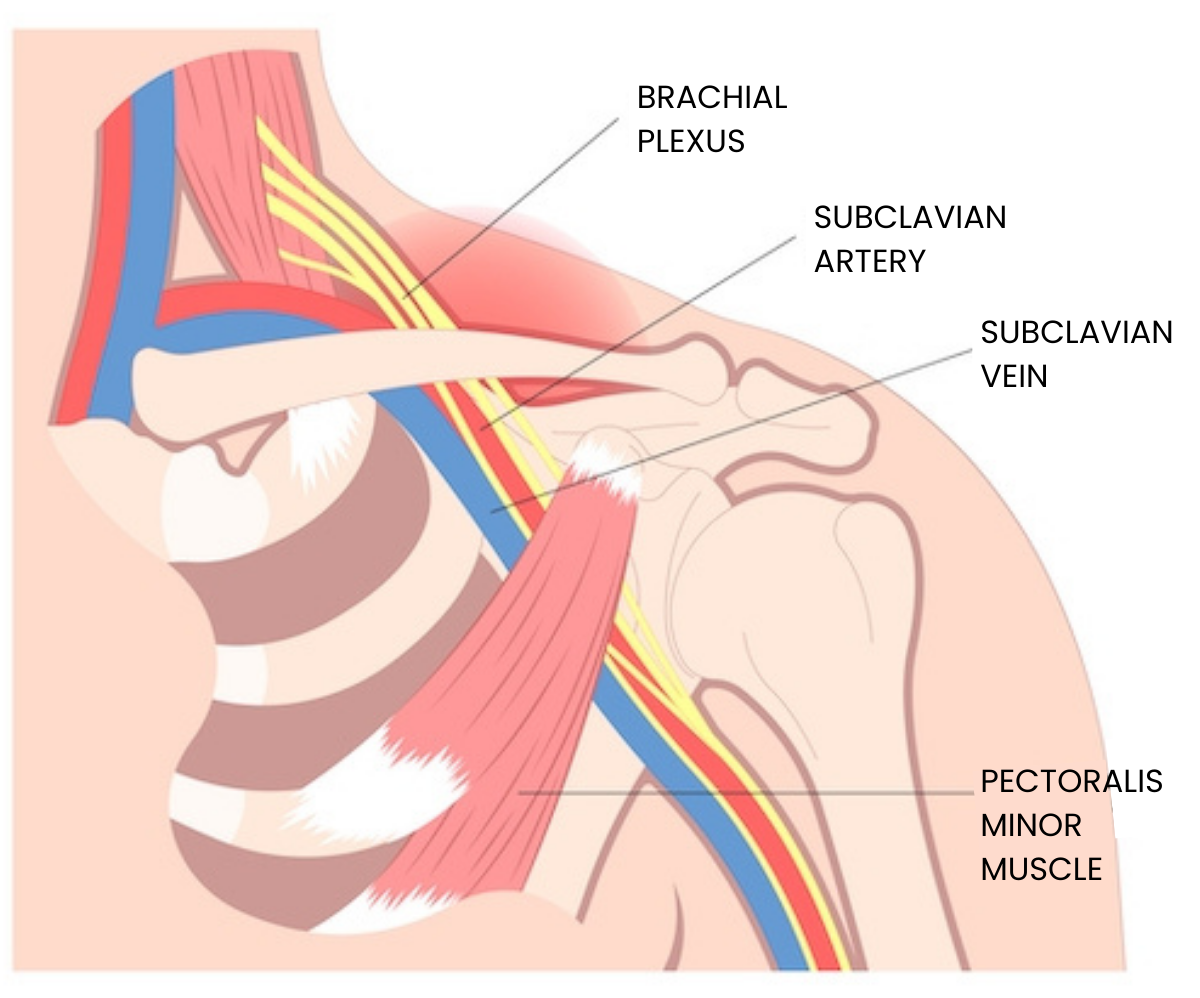Understanding Thoracic Outlet Syndrome
TOS patients suffer from a combination of fluctuating muscular and neural pain symptoms, predominantly in the neck, shoulder and arm in one side of the body. This is caused by compression of the nerves, vein and artery below the collarbone in the brachial plexus (see diagram). The condition is usually caused either by repetitive exercise activities, poor posture, or sports injuries. Most patients are between 20 and 45 years of age, and are predominantly female.
Pain onset is often delayed. For example, an activity that strains a set of muscles may only cause discomfort hours or a day later, making it harder for patients to accurately assess their own symptoms.
Patient treatment
Healthcare professionals often struggle to diagnose TOS due to inconsistent symptoms. Many patients endure months or years of uncertainty and misdiagnoses before receiving an accurate diagnosis. Once diagnosed, patients are referred to a Specialist Physiotherapist for between 6 months and 2 years of treatment. If this fails, surgery is an option, though full recovery is unlikely.
Physiotherapists report that many TOS patients are disillusioned with the medical system by the time they start therapy. However, my research found that most patients felt relieved to have a diagnosis and hopeful about recovery through physiotherapy.
The diagram above shows the patient journey through TOS, based on interviews with current patients and predicted outcomes from medical professionals. The colors represent patients' emotional states at different stages (red for frustration and despondency, green for relief). Data on patient drop-off before starting physiotherapy is unknown and not shown.
Let’s collaborate!
Hey, thanks for taking the time to review my work.If you have an idea that we could collaborate on, or want to know more about my process, feel free to drop me a message!

